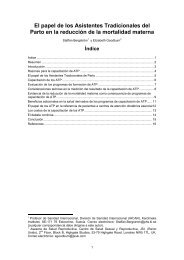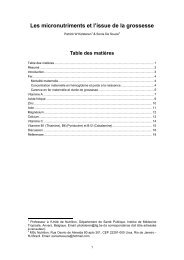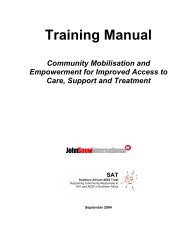book for PDF - John Snow International Europe
book for PDF - John Snow International Europe
book for PDF - John Snow International Europe
Create successful ePaper yourself
Turn your PDF publications into a flip-book with our unique Google optimized e-Paper software.
Soil improvement <strong>for</strong> annual cropsTraditional crop systems took care of the soil. Farmers practised mixedcropping. Rows were made by hand and seeds (such as maize, millet,sorghum, cowpea and pumpkin) were mixed in a basket and broadcastin rows. This meant that the soil was covered and protected. Thecowpeas improved soil fertility. Burning, ploughing and planting onlymaize is not good <strong>for</strong> the soil.Minimum tillageThis is a system <strong>for</strong> urban areas that protects and improves the soil andprevents pest and disease build up.Preparing the fields:• Avoid burning or ploughing.• Clear the weeds into piles and make them into compost.• Make rows using a hoe. Plant four rows of maize or other grainssuch as millet and sorghum then plant a strip of dense cropsuch as finger millet or soya beans.• Once the maize plants begin to appear plant crops between themaize rows such as groundnuts, cowpeas, sugar beans andpumpkins. You will get many crops in the area where you usuallyonly get one or two.• The next season rotate the strips so you plant the maize wherethe strip crops were grown and the strip where the maize wasgrown. The mixing of crops helps keep the soil fertile and keepspests under control.For extra protection of crops plant windbreaks of cassava, pigeon pea,sesbania and moringa around your fields. If you are planting in wetareas grow wild rice, sweet potatoes, cocoyams and sugar cane.59






